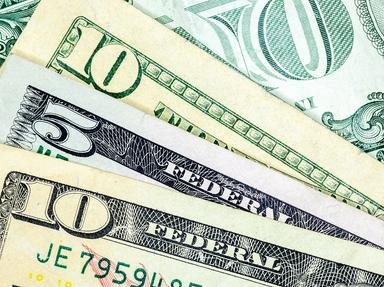Quiz Answer Key and Fun Facts
1. Authorized by the U.S. Constitution and established by an Act of Congress on April 2, 1792, the U.S. Mint is in charge of making all coins for use in general circulation in the United States. Other responsibilities of the U.S. Mint include all of these EXCEPT which one?
2. In 1996, Canada introduced the $2 coin to replace the $2 banknote because the coin is estimated to last about 20 times as long as the paper money it replaces. Up until the end of the twentieth century, had the U.S. Mint ever authorized and produced a $2 coin?
3. Did you know that all commemorative coins issued by the U.S. Government are legal tender? This newest of the officially commissioned U.S. Mints is where the commemorative coins are made as well as the American Eagle bullion coins are struck. Located near one of the major U.S. military schools, in which city would you find this unique facility?
4. The very first mint was located at 7th and Arch Streets in this city, and horses were used to run the machinery. Of course modernization and demand for coins grew along with the U.S., and this city's mint is now in its current facility, which was opened in 1969. Additionally, it is in this facility in which all U.S. coins and medals are designed and engraved. In which city is this mint located?
5. Could a mint be born from a doorstop? In 1788, a young man found a shiny rock that he found useful for a doorstop. It turned out that this was a 17 lb. gold nugget! This discovery led to America's first "gold rush" and North Carolina led the U.S. in gold production until the strike at Sutter's Mill in California in 1848. But what happened when you found gold? You had two choices - either ship it up north to have it converted into coins, paying freight and risking theft at the same time, or just letting bankers take up to 10% off the top to line their pockets. Hence there developed a need for a mint in what is known as the "Queen City". In which city was this now closed U.S. Mint?
6. Another former southern mint is in this Georgia town, where you can still pan for gold if you like! What was significant about these coins was the craftsmanship. Some of the finest gold coins ever made were produced here. Sadly, fewer than 1% of the coins minted here are still in existence. Where was this mint of yesteryear?
7. Like the other two southern mints, this mint was also opened in 1838, but unlike the other ones, it remained open until 1909 - long enough to produce the Indian Head $5 gold piece. It produced gold coins in denominations from $1 all the way to the largest issued - $20. It also minted silver coins including the "Morgan" dollar. Where on the Mississippi River was this mint located?
8. The U.S. government wasted no time in reacting to the California Gold Rush! This city's mint started producing coins in 1854, only six years after the discovery at Sutter's Mill leaked out. Part of this mint's history includes having survived the 1906 earthquake that devastated much of this city. In fact, no other financial institutions in the city were in operation immediately following the earthquake and this mint was able to serve as a bank. In which city is this mint?
9. Not everyone found gold in "them thar hills"! Some disappointed prospectors returning empty-handed from California in 1859 stubbed their toes on what became the "Comstock Lode" - one of the greatest silver finds in the U.S. Opened in 1870 following the Civil War, the mint in this city was designed to handle both silver and gold coin production. It made lower production runs with higher quality than most other mints of the time. While visiting this city, you can get a great feel of the High Sierras, but you won't find too many coins from here anymore. The mint closed for regular production in 1893. Where is this legendary mint?
10. The newest mint for production of coins for general circulation is in this western city. And produce coins it does - at the rate of some 50 million per day! First opened as an assay office, the need for this mint became apparent. A new facility was opened in 1906 in a grand Italian Renaissance building, where it operates today. In which western capital would you find this mint?
Source: Author
woofi
This quiz was reviewed by FunTrivia editor
coolupway before going online.
Any errors found in FunTrivia content are routinely corrected through our feedback system.
